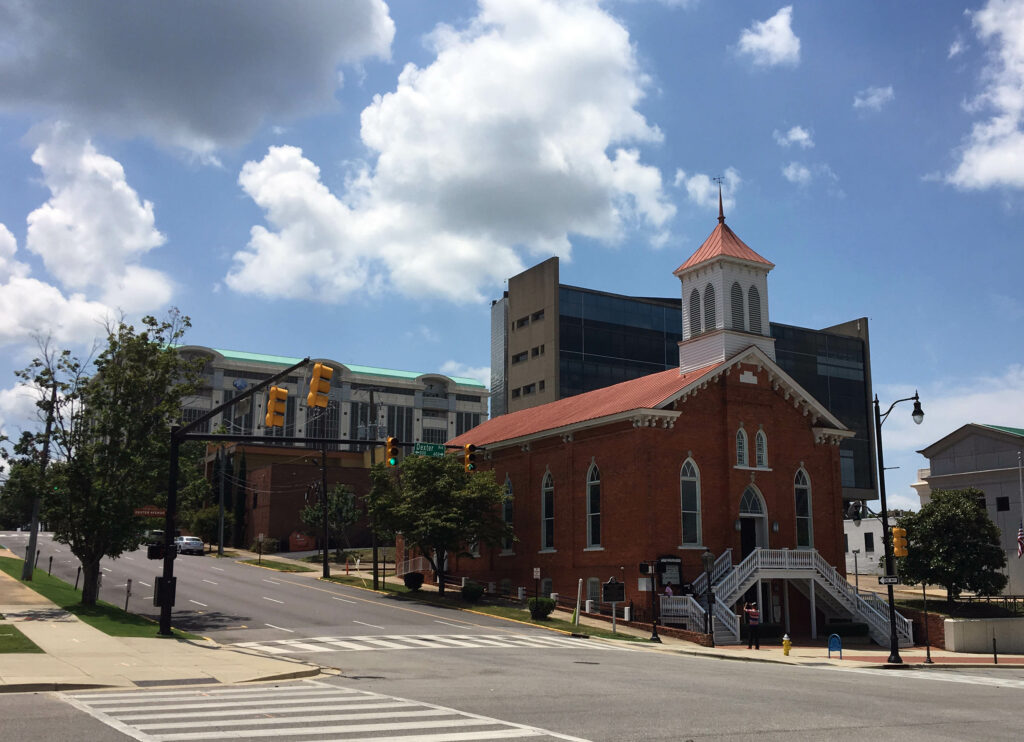
The idea for the pitstop for lunch went like this:
“So I don’t know how I feel about this idea, but I am just going to throw it out there —“ I said timidly.
“—go ahead,” my carpool friend Emrie Smith encouraged.
“— but it looks like Dexter Avenue Baptist Church isn’t far off the interstate in Montgomery. We could stop in for a minute, take some photos, find something quick to eat nearby, and then get back on the road. What do you think?”
“Let’s do it,” Emrie responded.
And so began an hour’s worth of events in the state capital of Alabama that unexpectedly turned quite spiritual for us.
Emrie and I, both students at Memphis Theological Seminary and new friends, were carpooling on our way back from the Cumberland Presbyterian Youth Worker Retreat in Panama City Beach, Fla. Both of us steeped in the ongoing support of the message of the Civil Rights Movement of the 1960s through the seminary, we were eager to see the location of one of the movement’s most famous landmarks — Dexter Avenue Baptist Church — the first and only church Martin Luther King Jr. pastored.
At MTS, we are taught that the work of the church and social justice cannot be separated, and that through the school’s academic goals — scholarship, piety, and justice — we can achieve a holistic approach to ministry and life and bring the healing light of Christ to the world.
Emrie and I had just come from a wonderful faith experience at our beach retreat, and were excited about getting back to our respective ministries with youth and our degree requirements at MTS. Living in Paducah, Ky., I have just a few months to go before graduation; Emrie, stationed in Nashville, Tn., is still quite new on her journey.
Each of us was more than excited to pay homage to a site that should be sacred to all our shared histories — black, white, or other. Crafting a post for Instagram sounded innocent enough, too.
As we navigated off the highway and parked on a side street by the church, we were astounded by the church’s inner city location. Surrounded by towering office buildings and other modern concrete structures, the modest red brick building with a copper metal roof stood out as being of another era. And not just because of its construction timeline, but all because of the building next door the history books don’t tend to mention much.
Dexter Avenue dead-ends in the front yard of the Alabama State Capitol building, also known as the first capital of the Confederate States of America before it later moved to Virginia.
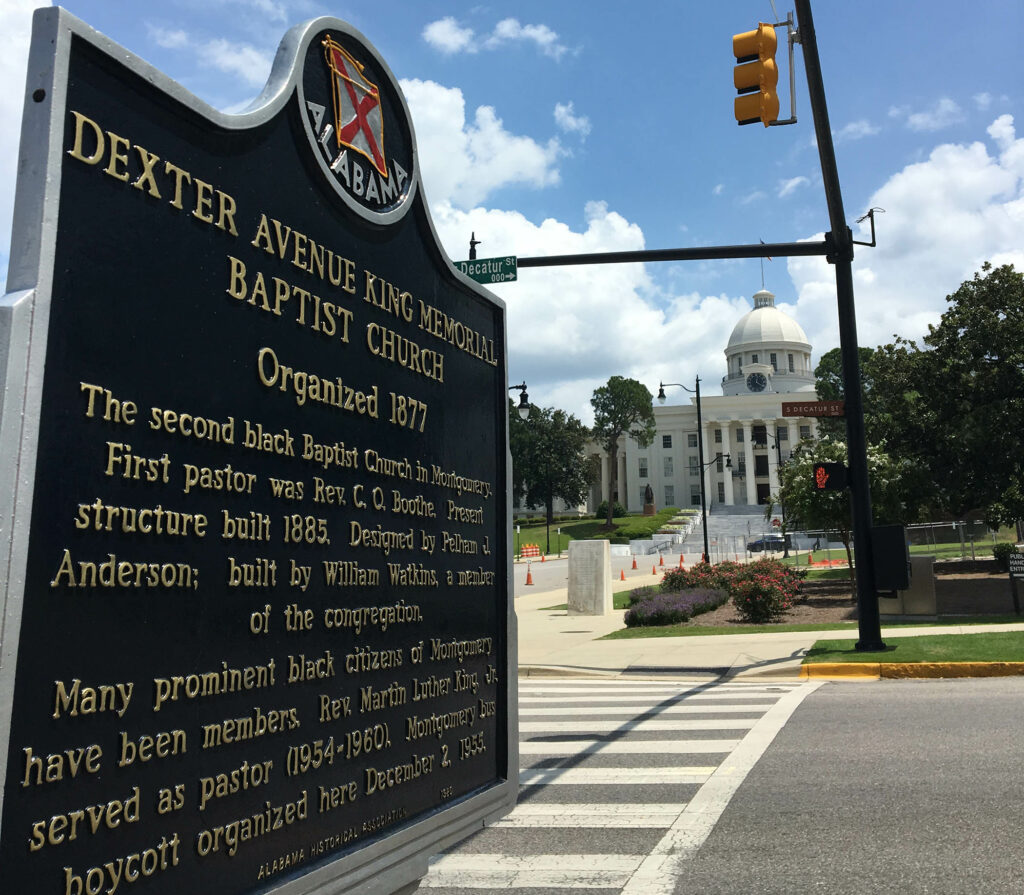
I can’t imagine leaving church each Sunday morning as an African American, having to look at the architecturally demanding structure where so many people — for more than 100 years — worked to enforce the oppression of my people.
The setting humbled Emrie and I, both white females, even more as we turned to appreciating the baptist church. Established in 1877 with the current structure being built in the 1880s, Dexter Avenue Baptist Church (now named Dexter Avenue King Memorial Baptist Church) is a testament itself to the pursuit of freedom and God’s providence. Its very foundation was protested by white Montgomery leaders, but since Union soldiers were still in the area, the congregation carried on, purchasing the land for $270. While other black churches were torched and burned during the Civil Rights Movement, Dexter Avenue remained unscathed. And with the voice of the future crying out to demolish the small church for the sake of Eminent Domain and profit, the congregation and church continued its ministry, securing identity as a National Historic Landmark in 1974.
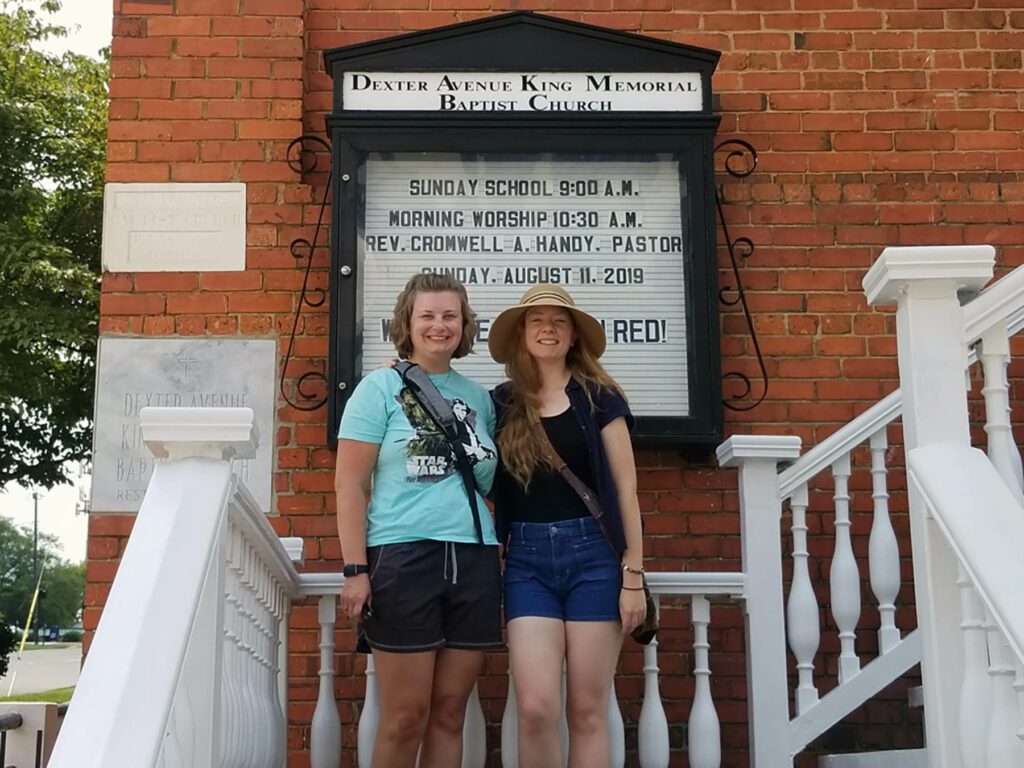
While taking our photos outside, Emrie and I also took photos for an African American family who were there with the family patriarch, Cornelius, 90, who worked at one time recruiting membership for the NAACP in Alabama. “I sat on the curb with Dr. King the day of the march, right here in front of this church,” he told us, the pride in his voice, and the memory in his eyes touching us.
Emrie and I were just turning to leave, ready to find lunch, when the door to the basement of the church opened.
“You want to come in for a tour? One’s just starting,” a kind female voice called to us.
With a shared look of agreement, knowing that spiritual and intellectual food was ahead, we joined the tour.
Our tour guide, Wanda Battle, insisted we introduce ourselves. So much for sneaking in quietly. We gave our names, said where we were from, and noted our connection to MTS, Memphis, and our plans to become ordained ministers in the Cumberland Presbyterian Church. We were introduced to others already on the tour. A few more joined in, and we were introduced to them, as well.
Love, joy, and pride emanated from Ms. Wanda as she began the tour in the pastor’s study of Dexter Avenue, where the desk, chairs, and bookcase that Dr. King used were still in place. Emrie would later say it wasn’t the artifacts that moved her that day, but because of Ms. Wanda’s value and love of each person, that we were able to be ushered into the very story itself.
So different than any other museum or historic tour I’ve encountered, Ms. Wanda made us all gather around Dr. King’s lectern, and touch it, while she took a group photo. By touching the lectern, it was as if we, too, were ordained for continued work of reconciliation and equality.
We paused by the multicolored mural, spanning almost 50 feet, that was painted by one of the deacons of the church. The mural told the story of the movement beginning with Rosa Parks and the 381-day bus boycott that put Montgomery on the map, and ending with an image of Dr. King rejoicing in heaven, with the diverse faces of children uniting as one group.
Looking at the mural, Ms. Wanda tried to point out to us that there were white allies in the fight for Civil Rights, but said that it was very dangerous for them to join the cause.
My stomach tightened at these words. More dangerous than what? The threat of being innocently lynched? The threat of being jailed for marching in the street? The threat of being shot at as you tried to cast your vote in an election? The threat of having your home bombed? White Americans may have shared in a few of these threats if they indeed ever became allies, but never had white Americans experienced the same kind of systemic, terroristic, daily oppression that our black and brown-skinned brothers and sisters had, and still at times, endure.
Our group was then led into the sanctuary, also largely untouched since Martin Luther King Jr.’s pastorate. The stained glass windows had been restored and padding added to the benches, Ms. Wanda told us, but most of the furnishings — the pews, the pulpit, the altar — were all in place during King’s tenure and were still there today.
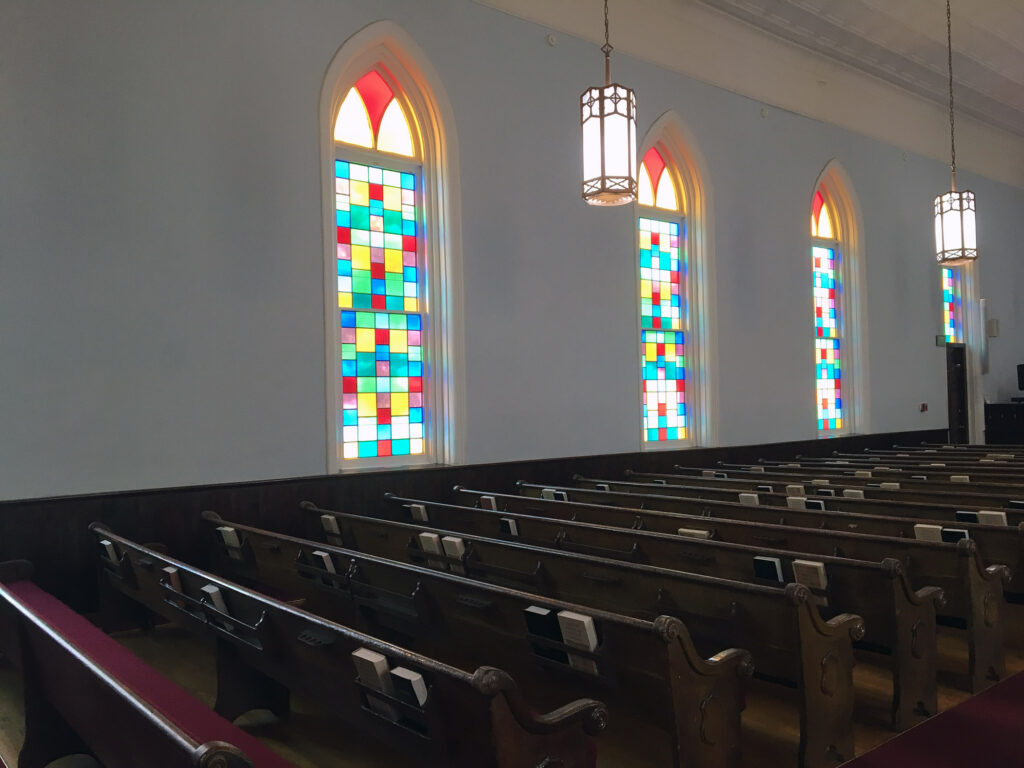
We wandered around, taking photos, pausing to rest on the worn wooden seats. Ms. Wanda, still expertly weaving our own stories with that of the one found represented at Dexter Avenue, discovered that one group member was a trained musician, and invited her to the decades-old piano to play a song. The young white woman’s face drained of color, knowing instantly what an honor it was to be given such an invitation, and scampered to the instrument, striking the keys expertly and beautifully.
I was so proud for her.
Then Ms. Wanda had us all circle up and hold hands. She led us in singing the Civil Rights anthem “We Shall Overcome,” but instead of singing about “someday,” we sang about “today.”
I was weepy. I was a little undone. The whole tour had humbled me.
And then Ms. Wanda looked at me.
“Dusty,” she said in her breathy voice, “would you pray over our time together?”
Still holding the hands of my tour mates, standing on the very floor that Martin Luther King Jr. and other courageous Civil Rights leaders had anchored themselves around, in a room where people still worship and pray today, I took a deep breath.
And I prayed.
I don’t remember much of what I prayed, except that I prayed that we all become instruments of reconciliation. The words tumbling off of my lips weren’t my own; it’s as if another tongue inhabited my mouth, giving way to a connection to heaven I’ve never previously experienced.
If I have ever had an out-of-body experience, this was it.
At “Amen,” I cried. Ms. Wanda cried. There were hugs all around.

The tour ended, and Emrie and I made our way back to her vehicle — the Alabama State Capitol building still in eyesight. We were stunned into silence.
We ate our lunch in a state of quiet reverence, trying to process what we had just experienced.
Our quest to know more, see more, and do more, turned into a time to feel more, love more, and listen more.
I’m grateful, humbled, and honored for the opportunity to witness history — even in the time it took to drive a few blocks off the Interstate — and to be a part of a future where we can overcome.
Today.
~ Dusty
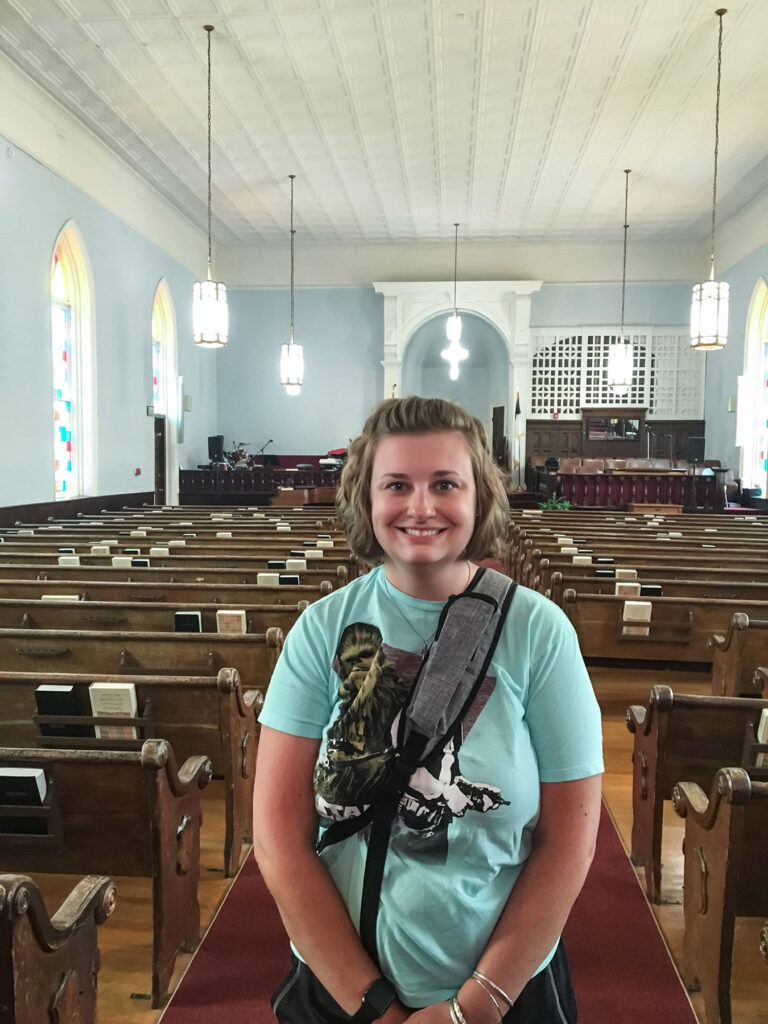
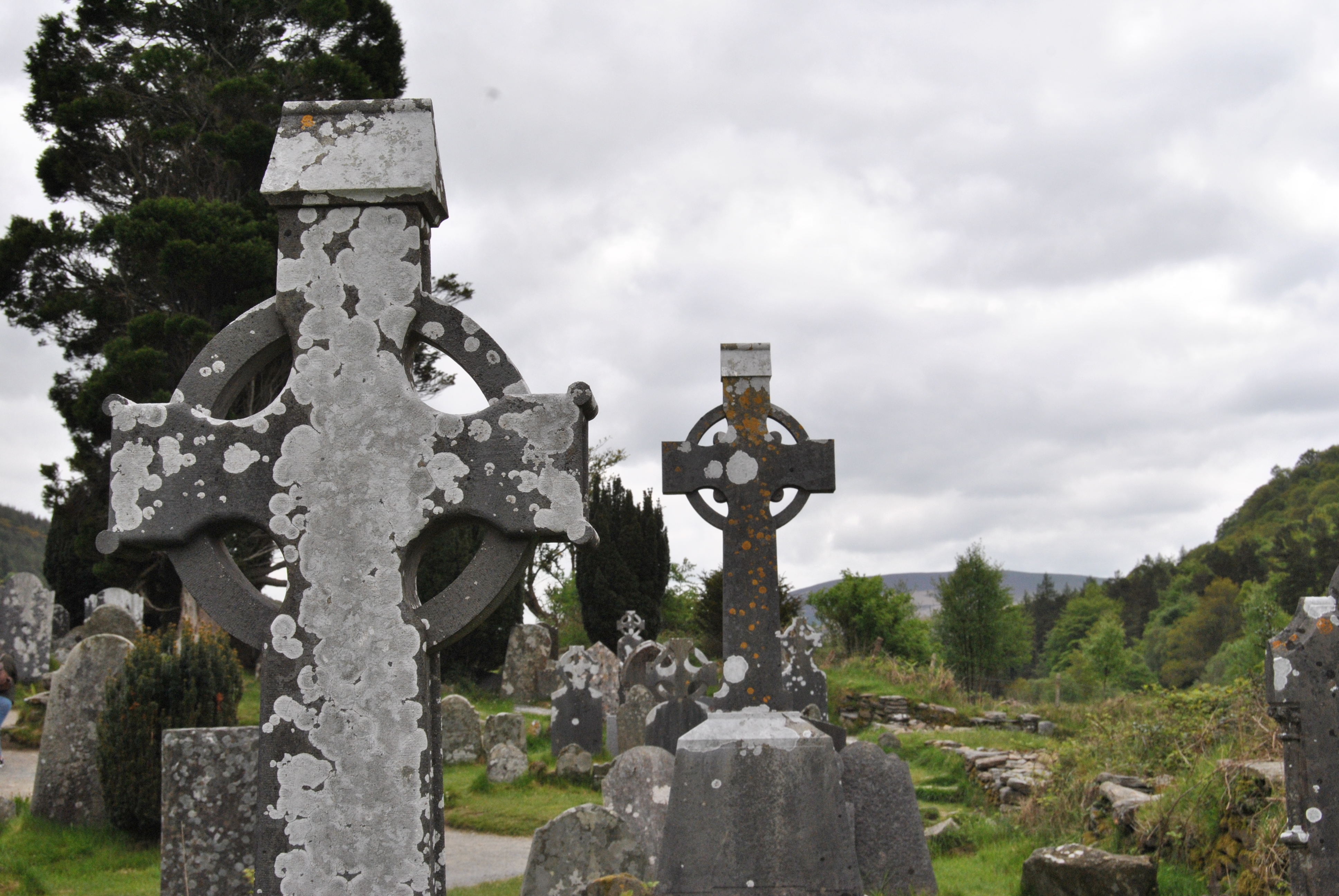
Thank you for initiating this adventure and for putting the experience into words. What an incredible gift to share this experience with you and to have this thoughtful article to help me remember and reflect on it!!
Wow, Dusty. Thank you for sharing this.
What an inspiring & touching story, Dusty! Thank you for taking time to share with such clarity and heart!❤️
I can see the happiness and reverence all over your face!